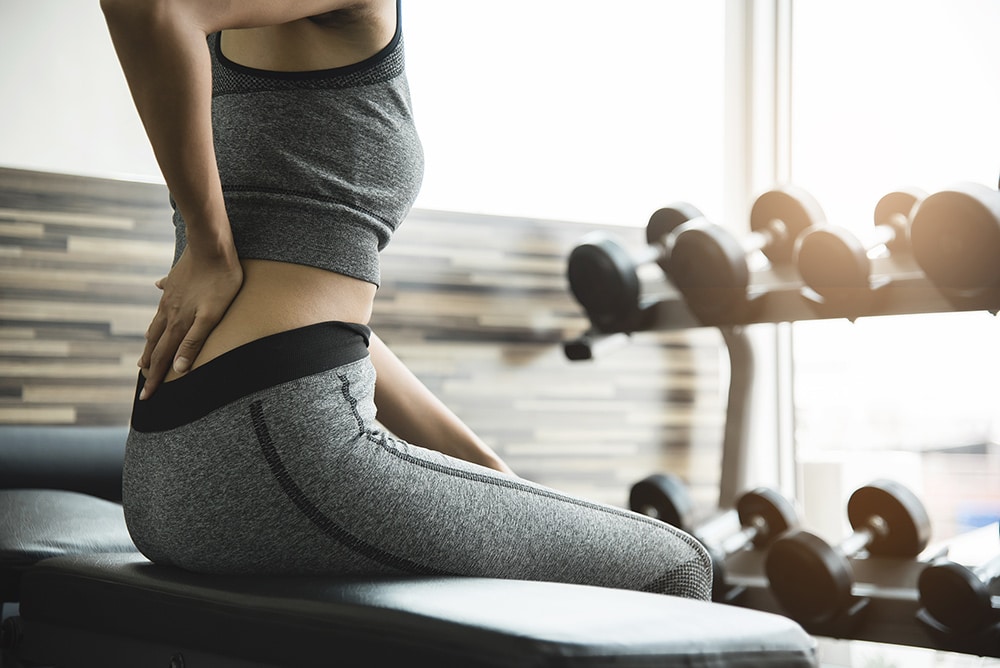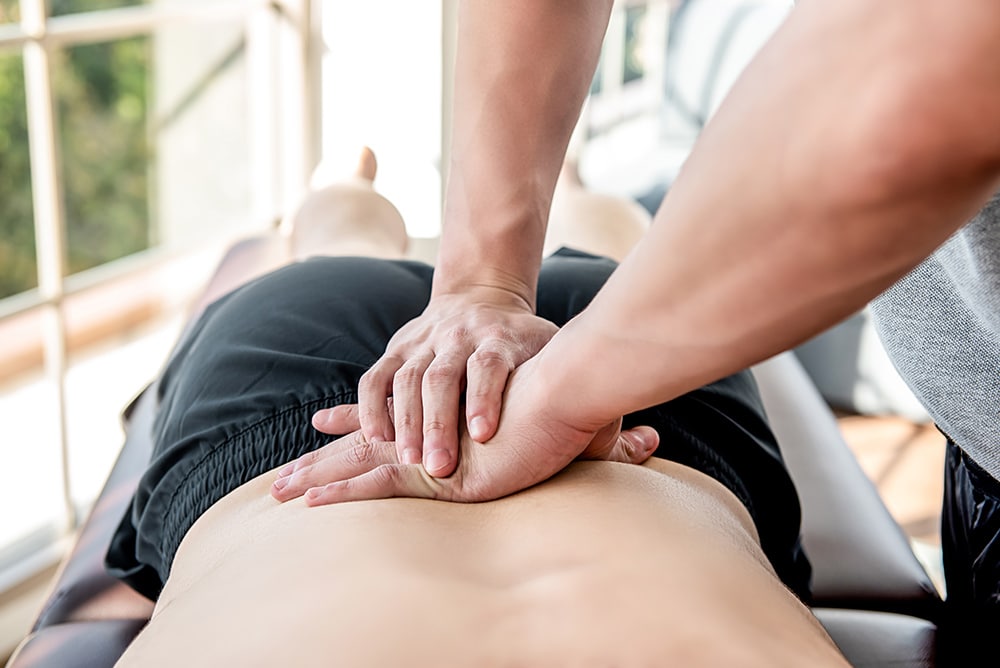- 3 January 2024
- Allen Yang
Last updated on January 4, 2024
Experiencing lower back pain from lifting is a widespread yet often preventable issue. Whether it’s due to a one-off incident or repetitive stress, understanding the root causes and applying effective treatment and prevention strategies are important for recovery.
This guide explored various methods to alleviate and manage lower back pain, ensuring a safe and effective recovery journey.
Table of Contents
ToggleUnderstanding Back Pain from Lifting
Lower back pain from lifting typically stems from a pulled back muscle, strain or injury to the muscles, ligaments, or discs in the back.
This can occur through improper lifting of heavy objects, sudden movements, or ongoing stress to the back area.
Recognising the early signs and symptoms is key to applying appropriate treatment methods promptly.
Importance of Safe Lifting Techniques
Safe lifting techniques are important in preventing lower back injuries. This involves using the legs rather than the back to lift, keeping the back straight, and avoiding twisting motions while heavy lifting.

Rest and Initial Self-Care
Rest and self-care play a fundamental role in the early stages of treating lower back pain.
- Recognising the Need for Rest: Rest is vital in the initial stages of a lower back injury. It allows the affected muscles and ligaments to heal and reduces the risk of aggravating the injury.
- Applying Ice and Heat: In the first 48 hours after injury, using ice packs helps reduce inflammation and swelling. Following this, heat therapy can be beneficial in relaxing muscles, improving blood flow, and aiding the healing process.
Over-the-Counter Pain Relief and Muscle Relaxants
Over-the-counter pain relievers and muscle relaxants like ibuprofen or acetaminophen can be effective to manage and reduce pain and inflammation.
It’s important to use these medications as directed and understand that they are for short-term relief, not long-term solutions.
Gentle Stretching and Exercise
Incorporating stretching and exercise into your recovery regimen.
- Stretching for Flexibility: Incorporating gentle stretching exercises can significantly improve flexibility and reduce tension in the muscles supporting the lower back. These stretches should be done carefully and consistently for best results.
- Core Strengthening Exercises: Strengthening the core muscles is essential for supporting the lower back. Regularly performing exercises like planks, bridges, and other core-strengthening routines can provide significant benefits.
Proper Body Mechanics
Understanding and practising proper body mechanics is a key element in preventing further injury and ensuring a healthy back.
- Weight Lifting Techniques: Poor lifting technique is a sure way to injure yourself especially with heavy or repetitive lifting using the same muscles. Proper technique when lifting weights is essential to prevent future back injuries. This includes keeping the load close to your body, bending at the knees, and avoiding twisting your back during the lift.
- Posture Awareness: Good posture, especially when sitting for extended periods, can help reduce stress on the lower back. This involves using ergonomic chairs, taking regular breaks, and being mindful of spinal alignment. Poor posture increases injury risks.
Seeking Professional Help
Knowing when to seek professional help:
- When to Consult a Healthcare Professional: Consulting Infinity Allied Healthcare is advised if pain persists, worsens or if you feel pain radiating in back muscles. We can provide a proper diagnosis and a tailored treatment plan.
- Physical Therapy: Physical therapy offers a range of exercises and techniques specifically designed to strengthen the back, improve flexibility, and promote healing.
Chronic Lower Back Pain Management Techniques
Additional pain management may include:
- Massage Therapy: Massage therapy can be a valuable tool in relaxing tight muscles, improving circulation, and relieving pain.
- Acupuncture: Acupuncture, an alternative treatment method, can also be effective in managing pain and promoting the body’s natural healing processes.
Lifestyle Changes for Prevention
Adopting lifestyle changes is essential for long-term health and the prevention of future back issues.
- Regular Exercise and Physical Activity: Maintaining a regular exercise routine is key in keeping the back strong and flexible, thus reducing the risk factors of future injuries.
- Ergonomic Adjustments: Making ergonomic adjustments in daily life, both at work and at home, can significantly contribute to maintaining a healthy back.
- Gradual Return to Lifting: When returning to lifting activities, it’s important to start slowly and increase the load gradually to avoid re-injury.

Conclusion: How to Fix Lower Back Pain from Lifting
In conclusion to the question, how to help lower back pain from lifting, it can be effectively managed and prevented with a comprehensive and mindful approach.
Understanding the causes, practising safe lifting techniques, and adopting a holistic treatment plan is key to a successful recovery and prevention of future issues.
Why Choose Infinity Allied Healthcare for Your Lower Back Injury
At Infinity Allied Healthcare, we specialise in addressing lower back pain from lifting, offering personalised care and effective treatment strategies.
Our team of experienced professionals is committed to guiding you through your recovery journey, if you’re struggling with chronic back pain in the lower area.
Book your appointment with us for expert guidance and support on your path to recovery.
Frequently Asked Questions
For more information, please read our frequently asked questions about how to fix back pain from lifting:
How do you relieve chronic back pain from lifting?
To relieve lower back pain from lifting, it’s important to rest the affected area, apply ice initially and then heat, use over-the-counter pain relief medications, and engage in gentle stretching and strengthening exercises.
Will lower back pain from lifting go away?
Yes, lower back pain from lifting often resolves with proper care and time. Rest, appropriate exercises, and avoiding activities that exacerbate the pain are crucial.
How long does muscle strain in the back take to heal?
The healing time for a muscle strain in the back varies depending on the severity of the strain. Mild strains may improve within a few weeks, while more severe strains can take several months.
How do I know if my back pain is a disc or muscle?
Differentiating between disc and muscle pain in the back can be challenging without professional assessment. Disc pain often presents as sharp, radiating pain, potentially with numbness or tingling in the legs. Muscle pain is usually localised, with soreness and stiffness.

About The Author
Allen Yang
Allen Yang graduated from Sydney University in 2010 and has been working in the physiotherapy field for almost 10 years. Since young, he has developed great interests in musculoskeletal physiotherapy due to his love for sports throughout his teenage life. Allen started INFINITY with patient-care in mind. He enjoys helping patients with their problems, as well as sharing his knowledge to fellow physiotherapists for better patient outcomes.
Categories
- Back Pain (2)
- Ergonomics (1)
- Kids (1)
- Pilates (1)
- Running Injuries (1)
- Uncategorised (1)
Recent Posts
20 October 2024
4 January 2024
3 January 2024
3 January 2024





